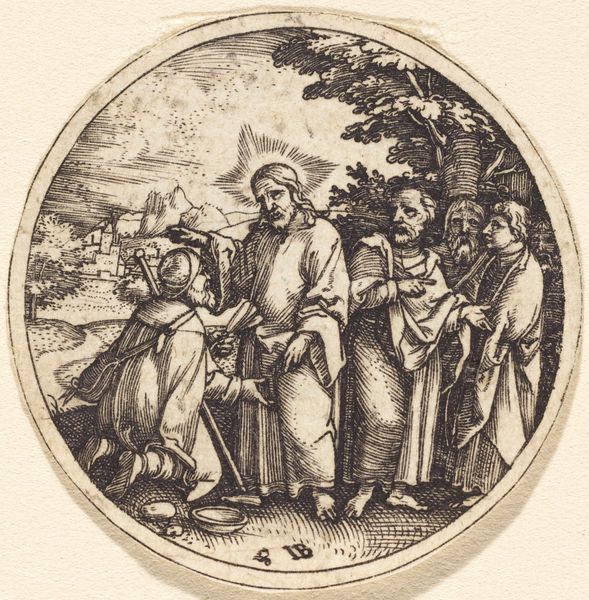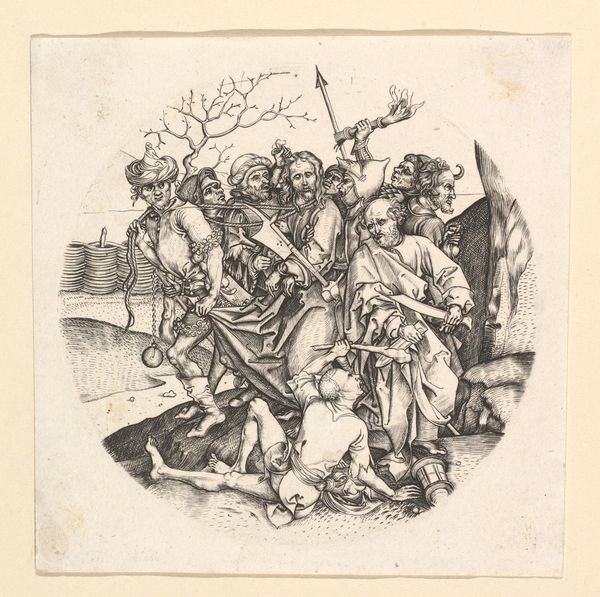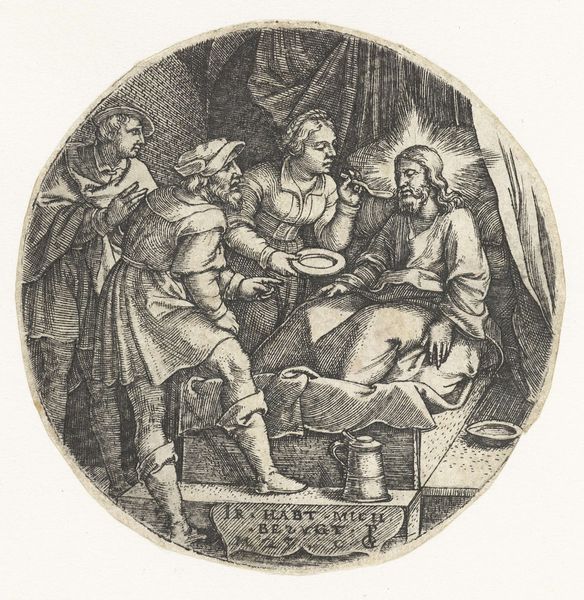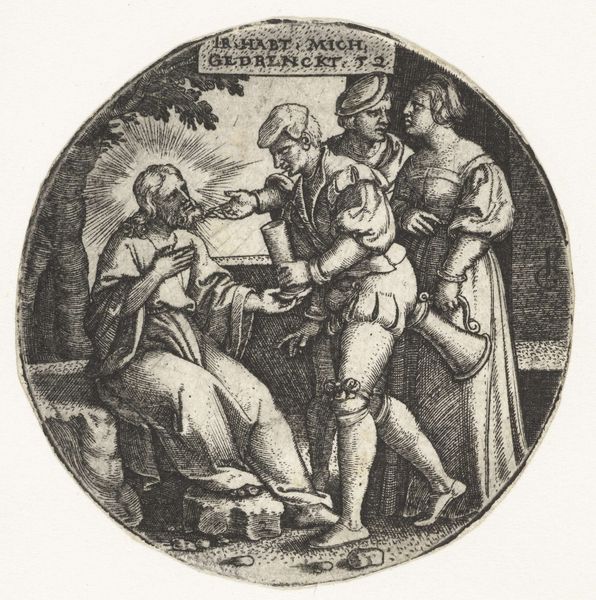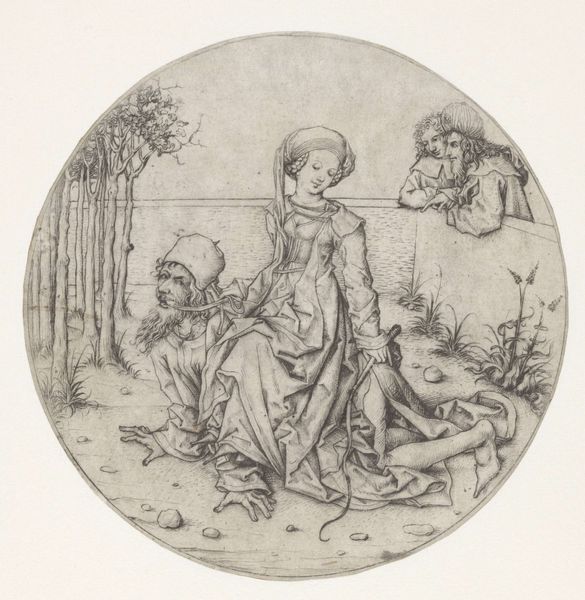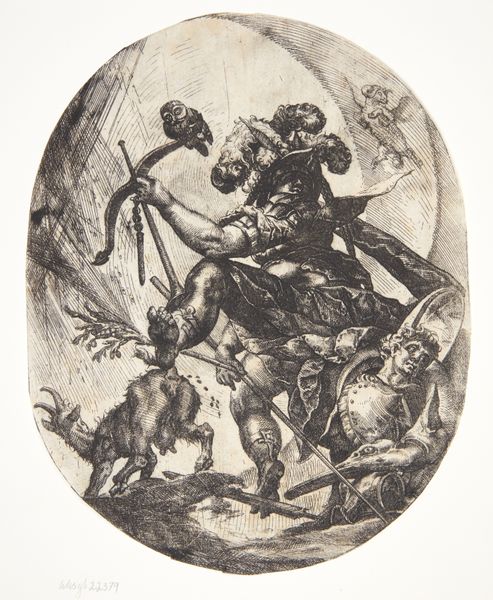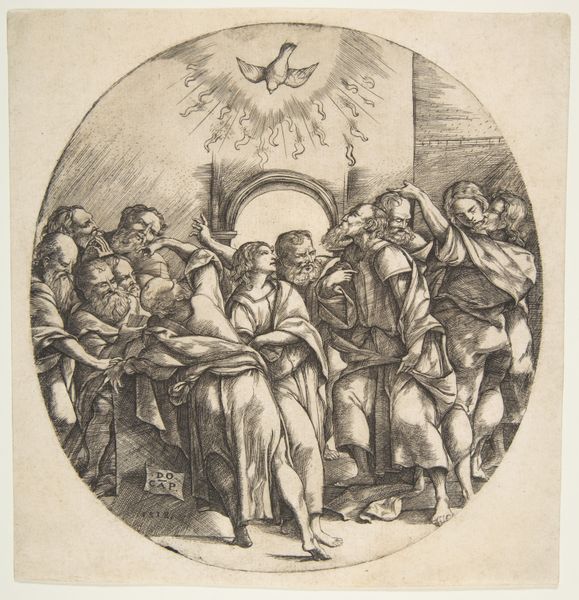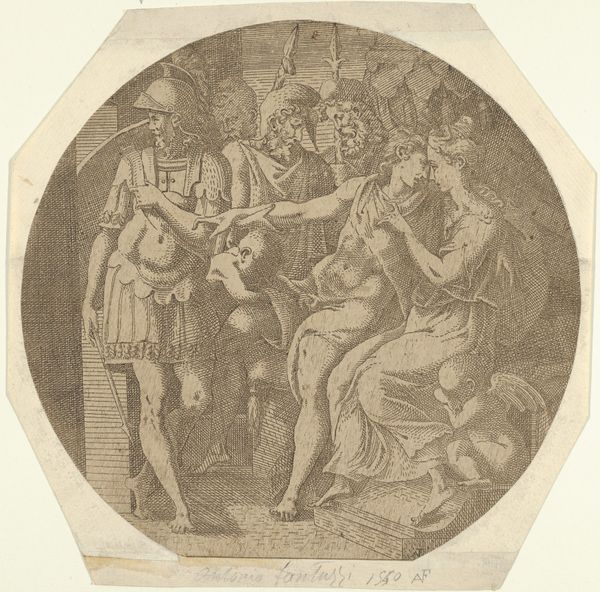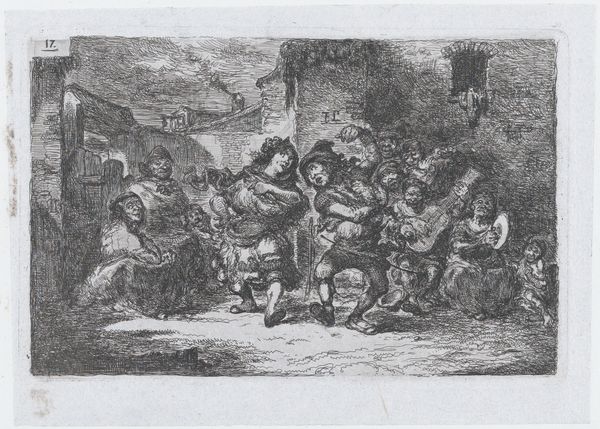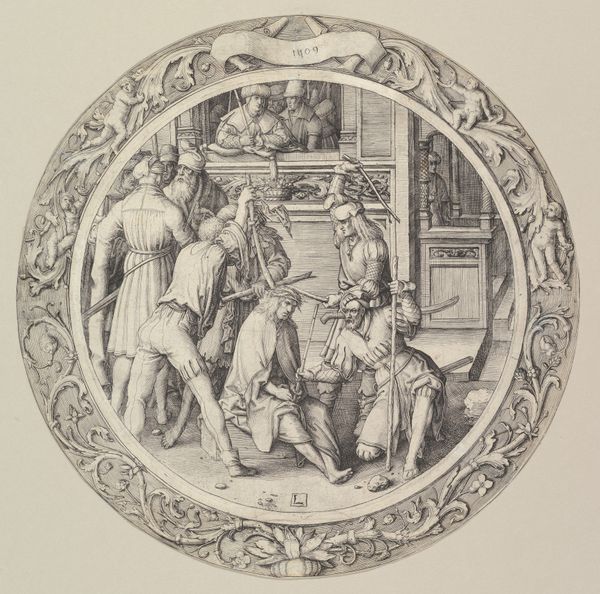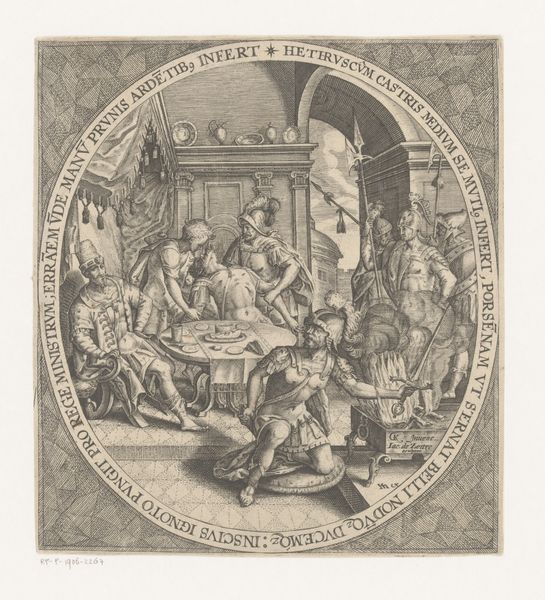
print, engraving
#
ink drawing
#
medieval
#
narrative-art
# print
#
figuration
#
engraving
Dimensions: 108 mm (None) (bladmaal)
Curator: "Kristus tages til fange," or "Christ Taken Prisoner," is an engraving from the late 15th or early 16th century, and its creator remains unknown. This print from the collection of the SMK depicts the moment of Jesus's capture in the Garden of Gethsemane. Editor: My first impression is of chaos contained within this circular format. The dense lines and crowded figures evoke a feeling of immediacy, like we're right there in the thick of it. It feels violent and fraught with tension. Curator: That's perceptive. Considering its historical context, the print likely served a didactic purpose, visually reinforcing biblical narratives for a largely illiterate audience. It would have been part of the rise in mass communication during that period, imagine viewing this print in the late medieval ages. Editor: Absolutely, and viewing it now, the themes resonate deeply. The betrayal, the mob mentality, the abuse of power – these are sadly timeless. The diverse reactions displayed by these characters become incredibly interesting when you see the artist capturing the reactions to a political prisoner within society. Curator: The figure of Christ in the center appears almost serene amid the clamor, further emphasizing his isolation. Also note how the artist uses costume to denote who the powerful people were; in essence, we're seeing how marginalized figures are painted through expression. Editor: Yes, his central, balanced pose creates a stark contrast to the disarray around him, the active chaos that he seems so opposed to. This adds layers to our interpretation. To me, it represents the cost of social and political injustice through one solitary figure. The idea that silence can become synonymous with oppression. Curator: Looking closely, we see some people acting with real violence while others are cowering. It reveals the different levels in which people perform the capture of Christ. Editor: Absolutely. Looking at this piece has reinforced for me that, sometimes, the most powerful statements are those made through quiet resistance in the face of overwhelming odds, challenging these historical oppressions through art today. Curator: For me, considering this piece allows us to trace the shifting political role of images during that time, showing how art engaged within the ever-changing societal conversations.
Comments
No comments
Be the first to comment and join the conversation on the ultimate creative platform.
